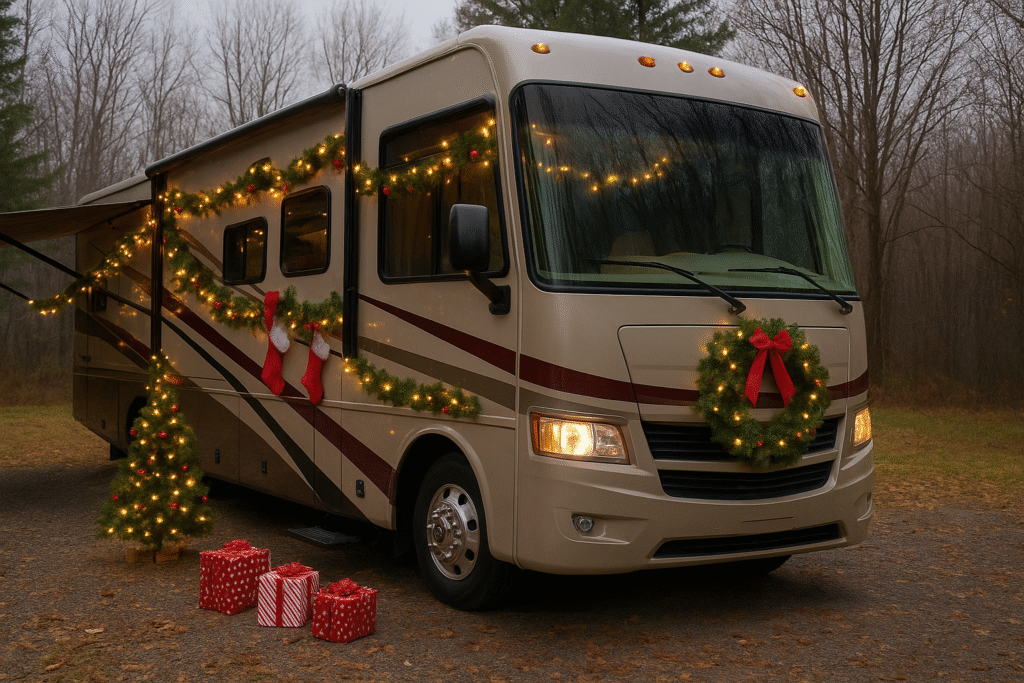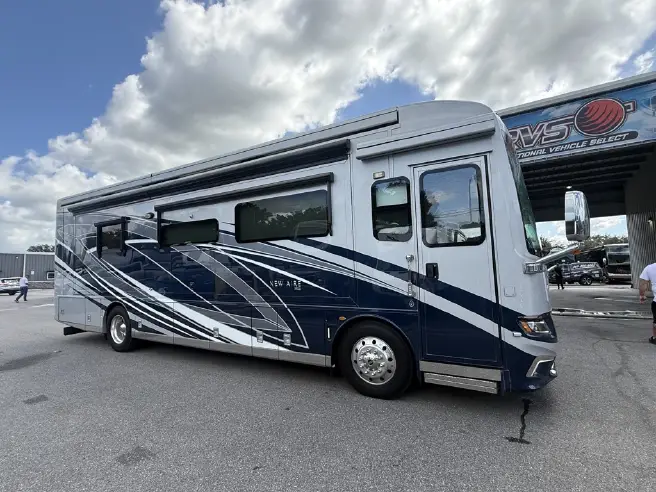Just like your home, an RV is susceptible to water infiltrating the cracks and crevices in windows, doors, and roofing. The development of water damage is especially concerning in an RV, however, because it can begin easily: Rigs undergo a lot of stress, tension, and flexing while in motion, and seals and seams can separate over time. What’s worse, water seepage can simply go undetected, eventually affecting walls, the interior, and mechanical and electronic systems. Additionally, water intrusion can lead to mold and mildew growth, which can result in health issues. Bottom line is letting water damage go unchecked in your rig can lead to many headaches and thousands of dollars in repairs.
For these reasons, it’s important that you occasionally check for water intrusion and repair any leaks or damage as soon as possible.
Read these helpful tips for inspecting your RV for water leaks:
- Check all seals, seams, and crevices – This is a hands-on process rather than a visual one. Run your hands along the seams and seals of slide-outs, windows, doors, vents, and other openings and feel for areas of softness or wetness. You should even get up on the roof (if it’s built to be walked on) and check for soft or discolored spots, especially near seams at the front and rear of the rig. Open upper cabinets and feel for softened areas along the edge that spans the wall.
- Looks for certain signs – Sometimes, your eyes alone can detect signs of water damage. Bubbling fiberglass, discolored or warped wallpaper, rusted hardware or rust stains on walls, and discoloration along the ceiling or near the tops of walls can all be visual signs of water damage. Your nose may even get in on the action and identify musty odors in your rig – that may be an indication of water intrusion, even if you can’t see it!
- Set an inspection schedule – For most RV owners, inspecting their rigs at the beginning and end of every camping season (or every spring and fall) is sufficient. You may choose to implement an inspection schedule like this, or opt to do it more frequently, such as before and after every trip.
- Make repairs – If you catch leaks early, you can fix the issue relatively easily. Check with your local RV supplies store and find out which sealants and repair tools you should use for the specific material you’re attempting to fix. For example, your roof may be made of fiberglass, metal, or rubber, all of which require different methods of repair.
If you take a proactive approach to checking for leaks and signs of water damage, and you get repairs done quickly, you can save yourself the hassle of costly repairs down the road. It may seem like overkill, but once you add these types of inspections into your routine, you’ll have an RV that looks great and performs properly for years to come.
To learn more about RV maintenance, contact us today!




